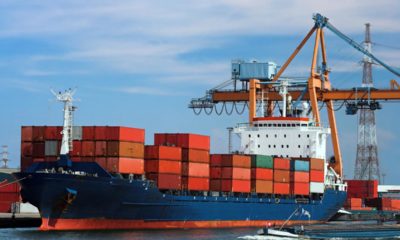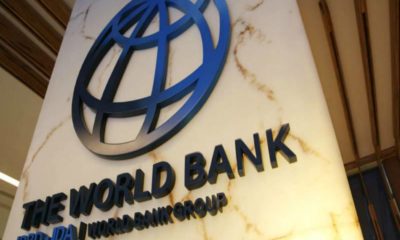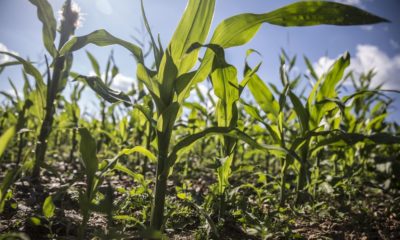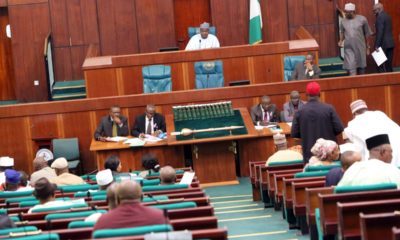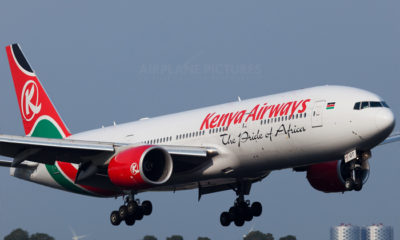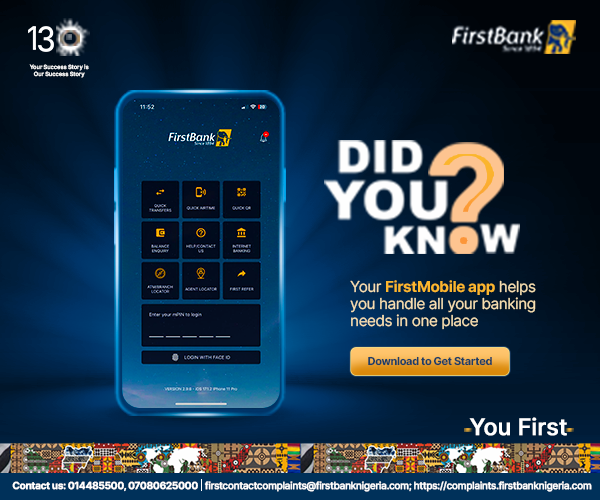Technology
Internet Penetration Dims as Millions Lose Access
Published
8 years agoon

- Internet Penetration Dims as Millions Lose Access
The Federal Government’s target of 80 per cent Internet and 30 per cent broadband penetration by 2018 may become elusive as about five million Nigerians have dropped off the Internet radar in the last one year.
Specifically, the number of Internet users in the country fell from 97 million in December 2015 to 91.8 million as at December 2016.
Except things get better and government gets more serious with the implementation of the National Broadband Plan (NBP), more subscribers may not eventually have access to the Internet. The situation has also led to a fall in the Average Revenue per User (ARPU) by 15.7 per cent.
ARPU is a measure used primarily by consumer communications and networking companies to calculate revenue made from a subscriber. It is defined as the total revenue divided by the number of subscribers.
The ARPU, which dropped in 2016, fell in response to the economic realities in the country. An operator said that subscribers were generally spending less than they used to.
Investigations have shown that about 40 million Nigerians, residing in some 207 communities in the country still don’t have access to basic telecommunications services.
While these gaps persist, the aggressiveness of the states in charging exorbitant fees as Right of Way (RoW), against the collective agreed levy of N145 per meter, is another challenge observers projected may hamper the progress being made.
But the Minister of Communications, Adebayo Shittu, while speaking with The Guardian, assured that the country would meet next year’s target, stressing that some efforts were already ongoing to ensure success.
The country has in the last few years attained a 14 per cent penetration, but relying on a UNESCO report, the Executive Vice Chairman of the Nigerian Communications Commission (NCC), Prof. Umar Danbatta, put the mobile broadband penetration at 20.9 per cent. Market observers have, however, posited that even at the acclaimed 20 per cent penetration, data services remain very poor. They observed that for both 2G and 3G connections, not to talk of the much-touted 4G/LTE service offerings, “it is still a snail speed across all the networks.”
Indeed, subscribers who have migrated to the 4G/LTE services in the country have expressed dissatisfaction with the offerings from the mobile network operators.
Since October 4, 2016 when indigenous service provider, Globacom Networks launched the service, shortly followed by South Africa-based MTN on the 6th, and the United Arab Emirates’ Etisalat on the 14th, subscribers have been trooping to the nearest shops of their service providers to migrate to the new wonder generation fast speed network, but their expectations have not been met.
The service may not even get perfected in Nigeria until 2020. The reasons adduced for this are that the 4G/LTE is still evolutionary, and that the infrastructure to run it is still very much inadequate in the country.
Nigeria is home to four submarine cables, including MainOne, Glo1; WACS and SAT3, with all having about 11 terabytes bandwidth capacity, but last mile infrastructure, multiple taxation, vandalism, among others, have continued to limit expansion of broadband services to other parts of the country.
Going by the NBP put up under the pioneer Minister of Communications Technology, Dr. Omobola Johnson, to which the current administration promised commitment, by 2014, the country was expected to have built fibre infrastructure across the country, introduced incentives for building of last mile wire line infrastructure to homes, estates, and commercial premises and extended international cable landing points to other coastal states. But The Guardian reliably learnt that only 15 per cent of this plan has been achieved with one year to the 2018 date.
Nigeria was also expected to have, between 2014 and 2015, ensured all new cell sites become LTE compatible; spread 3G services to at least 50 per cent of the population; completed digital dividend spectrum migration; and released more spectrum for LTE.
But because the country failed to migrate from analogue to digital in June 2015 due to lack of fund and the needed political will under the administration of President Goodluck Jonathan, the digital dividend spectrum in the 700/800MHz could not be transferred from the broadcast industry to telecoms operators.
Furthermore, in 2017, the NBP timetable showed that the country was expected to have wireless broadband infrastructure upgrade and expansion in phase two, and expected to spread 3G/LTE to at least 70 per cent of the population, but information showed that lack of access to foreign exchange by operators will limit their ability to order equipment needed to enhance roll-out of services.
According to the President of the Association of Telecommunications Companies of Nigeria (ATCON), Olusola Teniola, the steep devaluation of naira versus the United States dollar is serious and impacting negatively on the Capital Expenditure (CAPEX) programme of many operators in the telecoms industry.
Another target of the NBP for 2018, was the provision of wireless broadband infrastructure upgrade and spread of 3G/LTE to at least 80 per cent of the population, but there are skepticisms about the possibility of achieving this, especially because of the exorbitant levies by states and their agents on telecommunications operators, as it relates to RoW.
According to a document obtained titled “The Resolution of the National Economic Council (NEC) on Multiple Taxation, Levies and Charges on ICT Infrastructure in Nigeria”, dated March 21, 2013, the states had agreed to an administrative charge of N145 per meter for every build and N20 per meter yearly recurring fee for existing duct with five years of review on RoW.
While the Lagos State government allows an operator to pay N500 per meter for RoW, prices from other states totally differ. Ogun, Oyo, Osun and Delta charge N6, 500, N5, 200, N4, 748 and N4, 600. They remained the highest. Anambra, Kano, Bayelsa, Niger, Ekiti, Sokoto, Kaduna, Ondo, Cross River charge N1, 270, N1, 200, N3000, N1, 000, N3, 500, N3, 000, N1, 130, N3, 000 and N2, 250.
According to the Association of Licensed Telecommunications Operators of Nigeria (ALTON), these charges are high and they will definitely affect fast broadband penetration.
On the way forward for telecoms operators, ALTON’s Head of Operations, Gbolahan Awonuga, said service providers’ request that duty tax waivers should be given to them should be given consideration. “We are finding things tough due to the current naira status and Nigeria ecosystem situation, we are not isolated from the impact. Telecoms operators should be allowed access to forex at lesser rate,” he said.
Is the CEO and Founder of Investors King Limited. He is a seasoned foreign exchange research analyst and a published author on Yahoo Finance, Business Insider, Nasdaq, Entrepreneur.com, Investorplace, and other prominent platforms. With over two decades of experience in global financial markets, Olukoya is well-recognized in the industry.

You may like
-
Trump’s 14% Tariff on Nigerian Imports Raises Fresh Concerns for Trade and Economic Stability
-
Nigeria Secures $1.08 Billion World Bank Support to Boost Education and Combat Malnutrition
-
Trump Declares Economic Emergency Introduces Tariffs on Nigerian Exports
-
Nigeria, Brazil Partner on $1.1bn Agricultural Revolution Plan
-
Nigeria Considers Creation of 31 New States Despite Economic Challenges
-
Visa Denial Sparks Airport Drama as Kenya Airways Defends Staff

